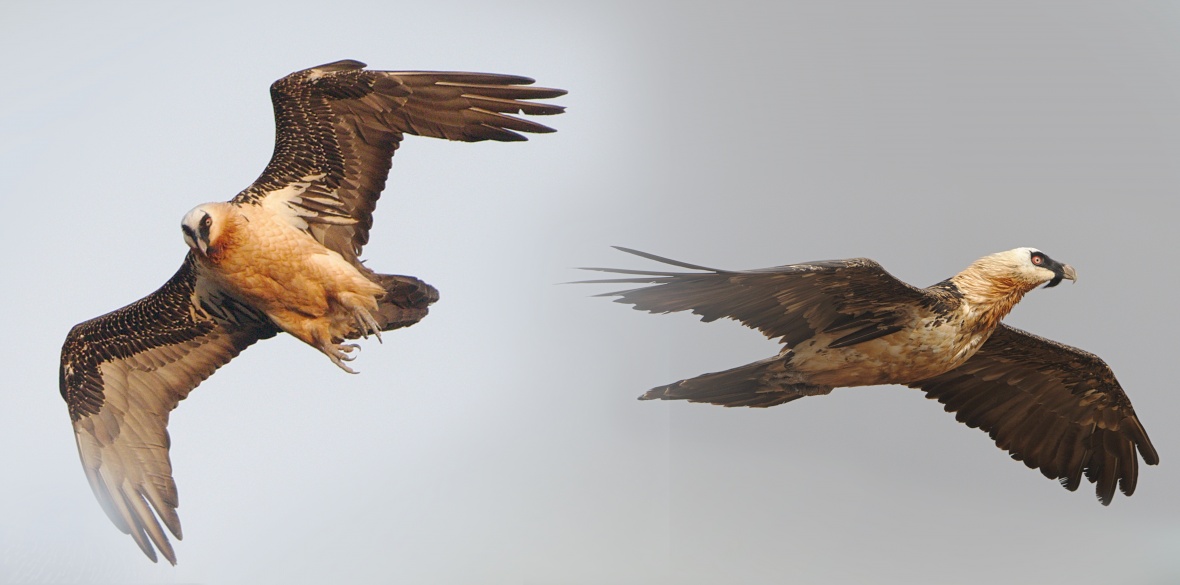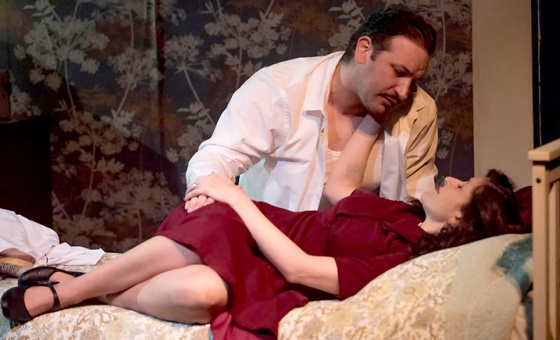This is the last article you can read this month
You can read more article this month
You can read more articles this month
Sorry your limit is up for this month
Reset on:
Please help support the Morning Star by subscribing here
IN July, like many others interested in birds, I smiled at and then ignored a number of tweets aimed at me and my local birders. The tweets suggested that a huge bird with a 2.5m (8ft 6in) wingspan had been seen near my home on the Warwickshire-Northamptonshire borders. Sadly hoaxes, or genuine misidentifications, such as these are all too commonplace.
As the day went on more sightings seemed to suggest that the giant bird did exist and was actually a rare bearded vulture (Gypaetus Barbatus) — one of the world’s biggest vulture species.
The bearded vulture is actually an unmistakable bird, not just because of its size. It has with black Elvis-style sideburns, red rings around the eyes and a long wedge-shaped tail. Facial markings and wings are black, the rest of the head, neck and body are a rich rusty orange.
When I heard that identification I reminded myself that nearby Warwick Castle actually had a captive bearded vulture named Barty, as part of its large birds-of-prey show.
The castle is closed at the moment due to lockdown but I knew that Head Falconer Chris O’Donnell lives on site and works alongside two others to take care of the 70 birds of prey in his care.
These include some real big boys and girls. They include the largest flying bird in the world — the Andean condor. Even without an audience, all Chris’s birds need exercise — and that means letting them fly free every day.
Let’s meet some of the Warwick Castle stars. Rosie is the Andean condor – weighing 15 kilograms and with a wing span of 3.2m.
Other giants are Marvin, a Steller’s sea eagle, and of course a bearded vulture named Barty. Bearded vultures like Barty are unique in the vulture world in not having a bald head: its head and breast feathers often appear an eye-catching rust colour, caused from dust-bathing or rubbing mud on its body.
The castle falconers soon confirmed that the bearded vulture flying loose over this corner of Shakespeare’s Warwickshire was not their Barty.
In his plays and poems, Shakespeare frequently referred to large birds of prey including falcons, hawks, eagles, owls, and kites. He loved falconry or hawking as it was then known. It was a form of hunting using birds of prey to fly free and hunt small animals and songbirds.
This is from Macbeth — a stunned Macduff reacts to news that Macbeth’s henchmen have murdered his wife and children:
“All my pretty ones? Did you say all? O hell-kite! All? What, all my pretty chickens and their dam at one fell swoop?”
The hell-kite is Macbeth and the phrase “at one fell swoop” has entered the English language — and what would we do without it?
But back to that incredibly rare sighting: pictures soon started to be published and soon confirmed this was a wild young bearded vulture. Those early photographs showed some very distinctive missing feathers and a damaged tail.
Once the pictures appeared online, birders abroad recognised the bird as one seen over Holland and Belgium a few weeks earlier. This bird was on a Europe-wide tour.
So had our vulture been attacking anything, or circling dying corpses? Actually its diet and eating habits are far more interesting than that. The bearded vulture was once better known as the Lammergeier, which translates as the vulture with the lamb.
They eat mainly the bones from already picked carcasses. The bird is capable of swallowing and digesting bones the size of a sheep’s vertebra. If the bones are too big, they fly up to 100 metres to drop the bones onto rocks, shattering them into bite-size pieces. This almost exclusive bone diet is remarkably rare among birds or animals.
In several regions, people did believe that bearded vultures stole sheep and even took small children — some people still do — so the species was hunted and poisoned to extinction. In the Alps the last bearded vulture was shot in 1913.
After a few days exploring Shakespeare’s country our giant bird made its way north. It was seen over Derbyshire and Yorkshire and regularly using a roost site in the north of the Peak District National Park. It even reached the Scottish border.
The Peak District is perfect bearded-vulture country with plenty of sheep carcasses, as well as typical roost sites on rugged cliffs and rocky outcrops. Bearded vultures do not like to be disturbed and need to feed quite often.
It is normal for young bearded vultures to range across vast areas, often outside their typical breeding habitat in mountain ranges. Nobody understands why. Perhaps they need to discover the motives of human gap-year travellers and compare notes. Our bird took the very unusual long-distance journey all around Wales and England, finally successfully crossing the English Channel homeward bound.
Bearded vultures usually don’t like crossing large water bodies and this might be why the species has only arrived in Britain once before, in 2016. It may be that the recent strong winds helped this year’s bird along.
Gypaetus barbatus is the rarest of vultures and there are several projects to reintroduce the bird in various high European mountain ranges as well as some in Asia. They use various methods to indentify birds, including rings, tags and feather-bleaching. However our visitor bird did not have any rings or markings.
The bearded vulture is a protected species, with about 400 pairs remaining in Europe and is quite sensitive, gravely affected by habitat disturbance.
After four months of soaring over the lakes, along with visits to the skies over Lincolnshire, Cambridgeshire and Norfolk including being spectacularly photographed over Peterborough Cathedral, our visitor, by now nicknamed Vigo, headed south.
Vigo was tracked south into Bedfordshire, somehow round or over the Capital and on to Kent. She reached the Channel coast on October 12, being seen at Beachy Head, East Sussex, on the afternoon of October 14.
Beachy Head is well known for observing migrating birds of prey, with rarities like the western osprey and European honey buzzard among the more regularly observed long-distance migrant raptors that either arrive in or depart Britain at this locality each spring and autumn.
After a morning of flying around the Kent and Sussex, Vigo climbed high into the sky and headed out to sea at around 12.40pm — but not for long, she was soon back.
After waiting about an hour, like some well-prepared human Channel swimmer, bright sun and a brisk north-easterly tailwind boded well for the crossing. Vigo bade farewell to our sweet isle forever.
Vigo left two small feathers to remember her by. David Ball, an eagle-eyed (or should that be vulture-eyed) birder from Yorkshire, offered them up for testing. They revealed that Vigo is a female that hatched last year in a wild nest in the Haute-Savoie region in southeast France.
Let’s hope that after her British adventure she is safely home — which would be not thanks to us humans. Preparing this column, I chanced to tap “bearded vulture” into Google. Up came pictures from a proud hunter of the massive bird he had just shot dead in the Cevenne mountains in south-central France. Yes it was a bearded vulture — he must be proud he has reduced the world population by one.
We must never forget the dreadful risks Vigo and her relatives, and indeed most vultures and other birds of prey, continue to face from hunting folk and their gamekeepers.









